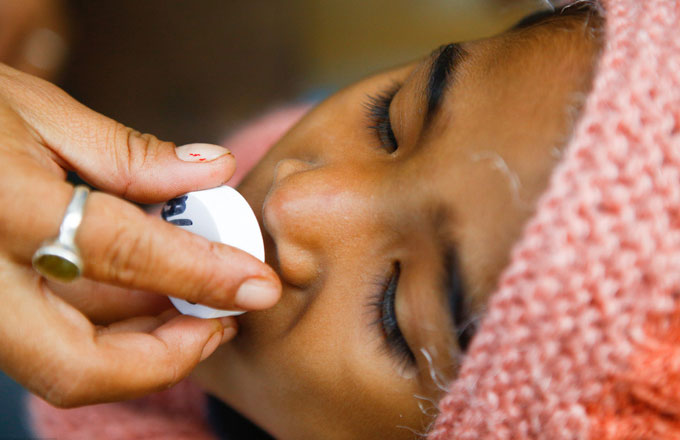Conference on disabled people identifies development goals
China will invest more in its disabled population in future, pay greater attention to their affairs and involve them more in its economic and social development, according to an official from the China Disabled Persons' Federation.
You Liang, deputy director general of the federation's international affairs department, made the comments while addressing the 7th Disabled Peoples' International Asia-Pacific Northeast Subregional Meeting, which concluded in Shanghai earlier this week.
He urged countries in the region to play an active role in disabled people's affairs by collaborating under a global framework and deepening exchanges and cooperation.
"The issue is as much about human rights as it is about development," he said.
"Highly developed economic and social conditions are premises to guaranteeing these rights. Empowering disabled people economically will not only allow them to safeguard their rights and realize their value, but also contributes to a stable society and prosperous economy."
There are about 85 million people with disabilities living in China, whose welfare has become a critical social issue for the country's development.
Some of the major areas where this is the case, as identified by the federation in recent years, include poverty alleviation, employment, social protection, gender equality, disaster relief and inter-regional cooperation.
China has already established a national basic welfare and subsidy framework for people with disabilities, based on the State Council's suggestions for enhancing prosperity, establishing full-coverage living subsidies for the impoverished and providing subsidized medical care for people with severe disabilities.
By gathering information through a survey of 26.6 million people with disabilities, a strong foundation has been laid for targeted poverty alleviation, rehabilitation, employment and other services, You said.
In the Asia-Pacific region as a whole, there are about 650 million people living with disabilities, accounting for almost two thirds of the global disabled population.
"It has become a common social issue for us all, to guarantee that they can benefit from, participate in and promote Asia-Pacific cooperation and development," You said.
"We'll keep pushing international organizations and mechanisms to fulfill this mandate, and accordingly to attach greater importance to these issues, creating more and better platforms for global collaboration in this area."
Nearly 40 delegates from China, South Korea, Japan and Mongolia attended the subregional meeting, discussing their experiences and the challenges they face implementing the UN Convention on the Rights of Persons with Disabilities and the Incheon Strategy to "Make the Right Real" for People with Disabilities in Asia and the Pacific.
The Incheon Strategy, a framework document launched by the UN Economic and Social Commission for Asia and the Pacific's Third Session of the Work Group on the Asian and Pacific Decade of Persons with Disabilities 2013-2022, outlined 10 goals to ensure equal social status for people with disabilities as well as protecting their the right to engage in and benefit from social development.
"We urge the South Korean, Chinese, Japanese and Mongolian governments to do their best to accomplish the goals of the Incheon Strategy until 2022," said Kim Dae-sung, chairman for the Northeast Asian Subregion of the Disabled Peoples' International, Asia-Pacific Regional Council.
"We ourselves should struggle to establish close partnerships with our governments so that the related policies will be more helpful to enhance the quality of life for people with disabilities."
A high-level intergovernmental meeting to review the progress of the Asian and Pacific Decade of Persons with Disabilities 2013—2022 will be held in Beijing next November.
wangzhenghua@chinadaily.com.cn
Fang Aiqing contributed to this story.




















